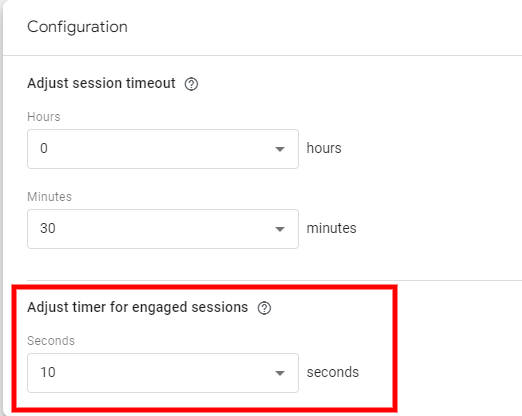Google Analytics 4 brought in plenty of new dimensions and metrics. There are currently 167 pre-built dimensions and 164 pre-built metrics. That’s a lot to remember!
It’s doubtful you’ll ever use all of those within the same GA4 property, but there are some dimensions and metrics you’ll want to use regularly.
One of these is Users. But wait! Google Analytics 4 has FOUR different types of users (technically more, but we’ll explain later). What are these different types of users, and how can you use them? Let’s run through them all.
The Different Types of Users
Let’s quickly run through the different types of users in GA4 and how they work in your GA4 setup:
- Active Users
- New Users
- Returning Users
- Total Users
When looking at users, you might be thinking something like this:
Let’s break down each user with Google’s definition.
- Active Users: the total number of active users.
- New Users: The number of users who interacted with your site or launched your app for the first time, triggering the event first_open.
- Returning Users: Users who have initiated at least one previous session.
- Total Users: The total number of unique users who have logged an event.
Now that we’ve got the basic definitions down, let’s jump into how to use them.
Active Users
Google’s definition breaks the golden rule of definitions: don’t use your own word to define the word itself.
Active users is the primary user metric used in Google Analytics 4. Active users are any users who have an engaged session or when GA4 collects the first_visit, first_open, or engagement_time_msec event when interacting with your website or app.
If you are looking for total numbers, it is under “Users” in all standard reports.
An engaged session is any session that completes one of the following:
- A session that lasts 10 seconds or more
- Involves 2+ page_view events
- Involves at least one conversion
Here is what qualifies as an active user:
- Someone who converted but only viewed one page
- Someone who viewed 5 pages but never converted
- Someone who stayed on the site for 2 minutes and only saw one page
Here is what does not qualify as an active user:
- Someone who left the site after 8 seconds
- Someone who viewed only one page under 10 seconds
For many, 10 seconds isn’t long enough to establish an engaged session. That means a user could visit a page on your site, stay there for 11 seconds, and be classified as an active user.
This is a setting we recommend changing. To do so, go to Admin→Data Streams. Once inside, click on Configure tag settings.
Once inside, click on the blue ‘Show More’ button. After clicking there, click on Adjust session timeout.
We recommend changing that to 30 seconds. This seems more realistic. Someone who spends less than 30 seconds on your website may not be really engaged or may not have the time to view more than one page.
New Users
This one is a bit easier to understand. New Users are users who have interacted with your site or app for the very first time. New Users is the sum of users logging the first_visit or first_open event.
You can break down new vs. returning users in Looker Studio to get a breakdown.
New user numbers can be found in almost all standard reports.
Returning Users
Similar to new users, returning users are users who have been to your site or app before.
Unlike the other types of users, Returning Users have their own special section inside your Google Analytics 4 dashboard.
In your standard life cycle report, you will see a lone wolf section titled “Retention”.
Here, you can see the Retention Overview, breaking down New Users and Returning Users. It can provide some interesting insights into how often users are returning and any specific trends.
Here, we can see Returning Users are more likely to visit the site during the week while weekend activity drops off considerably.
If you’re looking for additional insight into your returning users, you can always create a custom audience to track their activity.
Total Users
Total users is a bit different from what you might expect. It WAS the primary user metric for Universal Analytics, but now that responsibility lies with Active Users.
New Users, Returning Users, and Active Users may show up immediately under any Pages/Landing Page report. Total users is going to be found in your Conversions and Events report.
Total Users measures the number of users who performed any kind of event on your website or app. With everything being an event in GA4, any event will count towards your total number of users.
Total users is used to count Event count per user. For this account, we can see the average number of events per user is just under 8.
We can see here that most users average 2.84 page_view events.
Total Users is also used for the User Conversion Rate metric, calculated by conversions by total users.
Conclusion
As we can see, the different user types may be confusing at first, but all serve unique purposes for tracking user and overall web activity. Understanding how they work can help you unlock insights into overall user experience and performance. If you’re looking for analytics help, feel free to reach out and get started today!
Search News Straight To Your Inbox
*Required
Join thousands of marketers to get the best search news in under 5 minutes. Get resources, tips and more with The Splash newsletter:







